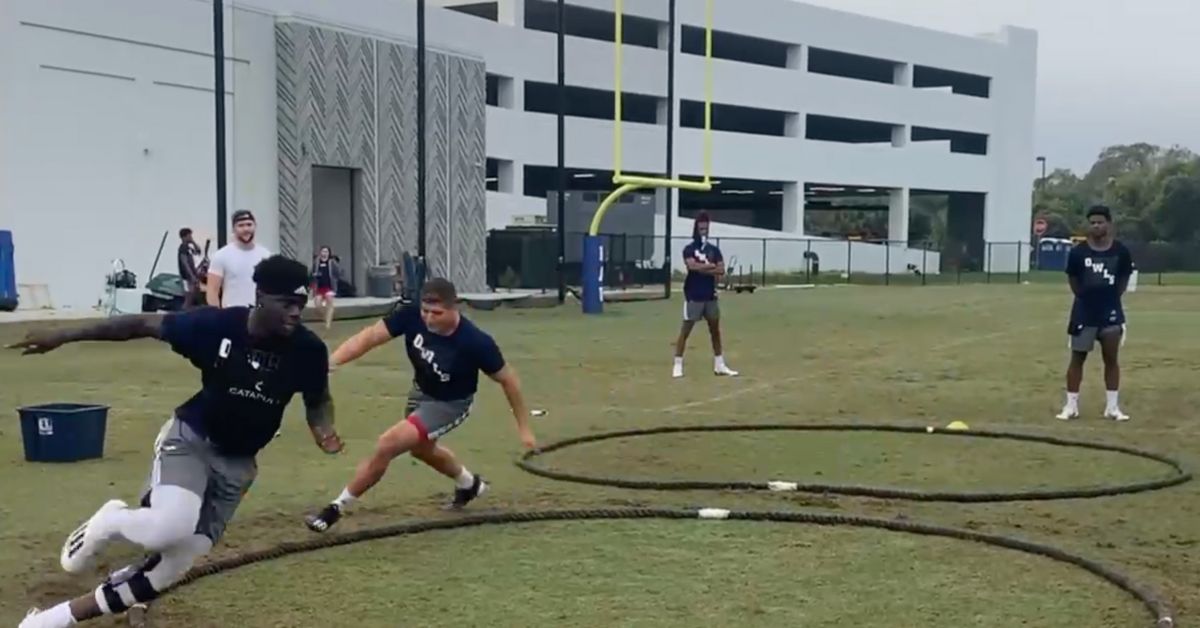Small-sided games may be the best training modality a team can progress into during the off-season. Coaches train specific athletic biomotor abilities in the hope of transfer to the sport, and most coaches are on the right path but don’t deliver the athletes to the final destination because of the lack of open agility drills in the build-up to the competitive season.
Speed and power training are popular subjects among the strength and conditioning crowds, and rightly so. Having general abilities, such as linear speed and power capabilities, will definitely give athletes a leg up over those with lesser abilities. The difference between elite players and average players is that elite players maximize the expression of their athletic abilities in game play.
Video 1. Reacting fast on the competitive field involves more than just physical attributes, and athletes become increasingly comfortable with specific situations that can be injected into the training process through small-sided games.
Having fast fly 10s and sky-high vertical jumps won’t help unless the athletes can process the environment and provide the proper movement based on their opponent’s cues. The abilities necessary to have fast game speed are trainable. In the first article of this four-part series, we spoke about the four main athletic contributors to increasing game speed:
- Acceleration
- Deceleration
- Max speed
- Change of direction
Combining these general attributes with open agility training in the form of small-sided games will better prepare the athlete to increase real performance in the place it matters most: the game.
Skill development is not complex; it takes focused reps and time. Once athletes more quickly execute the attributes that increase skill, they need to be allowed to self-discover and fail in a controlled environment before increasing the accuracy of skill execution in actual gameplay. Increases in strength, speed, and power alter the timing and rhythm of movement. There is a period of figuring out the new changes the athlete has achieved.
Small-sided games provide the appropriate space and environment to develop desirable skills that reduce gameplay-induced, non-contact injuries and hone advanced athletic abilities, says CoachJoeyG. Share on XSmall-sided games provide the appropriate space and environment to develop desirable skills that reduce gameplay-induced, non-contact injuries and hone advanced athletic abilities. Skills allow athletic traits such as speed, power, and strength to be exhibited in play, but skills need practice and environments that are close to gameplay. You don’t win games by having the strongest team; you win games by having the most skilled team.
We have covered a lot of ground on this subject with the why, the how, and the what as it pertains to adding small-sided games to off-season training. The one subject I have neglected to cover so far is the when. The when to include small-sided games is what brings this whole thing home. Training compatibility is a phrase that first came to my attention at a clinic where Boo Schexnayder was lecturing.
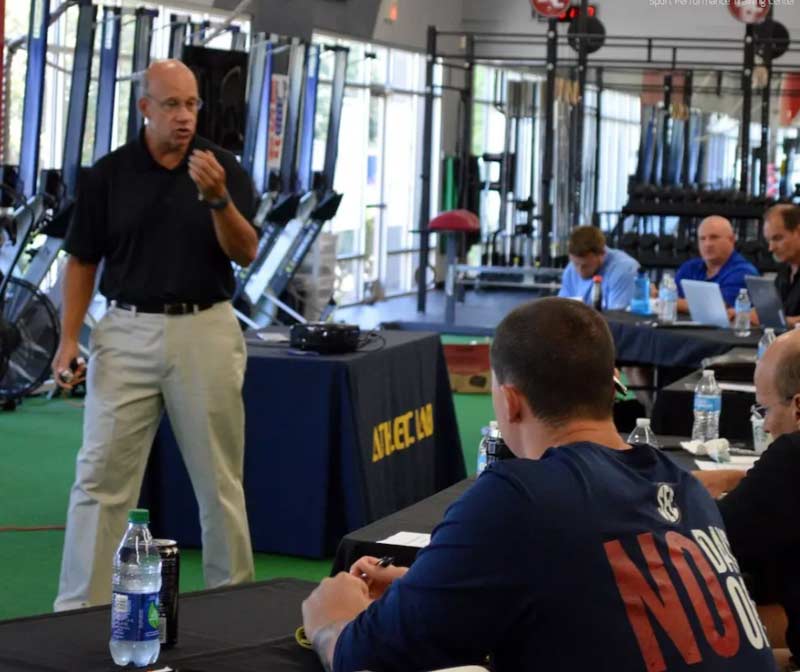
Managing the training process in a way that progresses toward specificity while maintaining and building general qualities is an imperfect science. It is an art that necessitates mastery and comprehension of your own training program and an unbelievable understanding of your athletes’ current states. It is ever-changing and extremely fluid. Determining when to add intensity, when to bring down volume, and when to change exercises or drills takes absolute comprehension of the training that is occurring and a great feel for the current state of your athletes.
Training processes need to feed off one another in a constant build toward the final “state,” where strength and conditioning coaches feel their athletes are the most prepared for the demands of play and the rigors of the season. Days must work together, and weeks must build off one another with increased performance in mind the entire way. The training year needs to build from general to specific and simple to complex—many great coaches have the foresight and wisdom to schedule training in a way that maximizes performance and minimizes training interference.
Video 2. Small-Sided games.
During the following sections of this article, we will go through three parts of integrating small-sided games into training that will promote training compatibility:
- The training year
- The mesocycle
- The microcycle
Training Year
Planning a full 12 months out can be a daunting task that engulfs coaches as they try to organize every detail for the training year. In my opinion, when creating the yearly plan, coaches should hit broad strokes—be less about details and more about block themes. Taking a 40,000-foot view will allow the strength and conditioning coach to see how central training themes progress from one another as they navigate through the training year and into the competitive season. When inserting small-sided games into the training calendar, coaches must consider how far out of the competitive phase to add them in—adding them too early in the training year will lead to coaches neglecting some basic biomotor abilities.
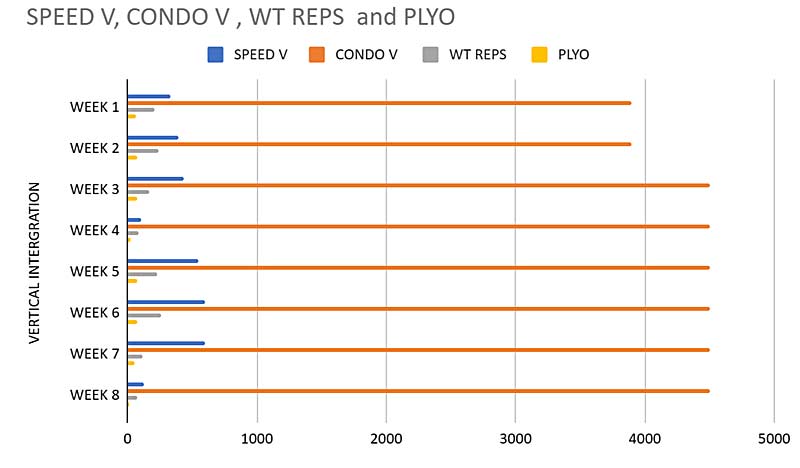
Following the guidelines of the third piece in this series, coaches want a thorough and well-planned progression that feeds biomechanical landmark positions and tissue stress capacity demands before increasing the intensity and complexity of drills. General training methods that hit on the four cornerstones of athletic abilities (COD, accel, decel, max speed) will prepare the players for specific training environments such as open agility drills.
Taking the first block of training to work on acceleration and deceleration will feed the second training block, which will feature COD and max velocity work before arriving at a training period that builds on the open agility drills and small-sided games. Placing small-sided games four weeks out from the competitive period is ample time to bridge the gap between general training and the specific demands of the incoming practice and game situations.
Placing small-sided games four weeks out from the competitive period is ample time to bridge the gap between general training and the specific demands of the incoming practice and game situations. Share on XLook at the calendar and work backward from the competitive period to properly gauge how much time the strength and conditioning coach will have because this will significantly impact progressions and exercise selection. If your head coach only gives you four weeks of training prior to spring ball or fall camp, it will really change any complex training modalities scheduled in a longer training block. Be realistic with training progressions based on available time and strength and conditioning coaches being comfortable sending the athletes into season based on preparedness off of the training build-up.
2. Mesocycle
The mesocycle can last 3–6 weeks, depending on the time allotted in the off-season. Knowing the broad strokes provided by the training year overview will make piecing the puzzle together simple and time-effective. Understanding that each block of training will have a main training theme emphasized over the others creates a blueprint for the training weeks in which more detailed planning can take place.
I like to work in four-week blocks, as I feel it is clean and simple when planning the loading over the off-season. When working backward from the training year overview, I know where to end the current training block and when my athletes need to head into the following block. I break my first eight weeks into four themes or blocks to address all the demands needed to prepare players for spring ball. Keep in mind that I utilize a vertical integration model, so some of the other biomotor abilities are still being trained, just at a reduced workload compared to the block’s theme.

The common pattern in this progression is that training becomes more specific to the demands of the game as we travel through the off-season. As a strength and conditioning coach, by the time we arrive at week 8 of the off-season, I want my players to be prepared to perform in a competitive sports environment. Having more than three weeks of small-sided game exposure will bridge the gap between the general training and specific play demands that await them in the following weeks of spring ball. Pairing together training qualities is a subject that is beyond this article’s scope, but using Vladimir Issurin’s research and recommendations will allow for minimal disruption of training adaptations if the coach pairs the appropriate themes.
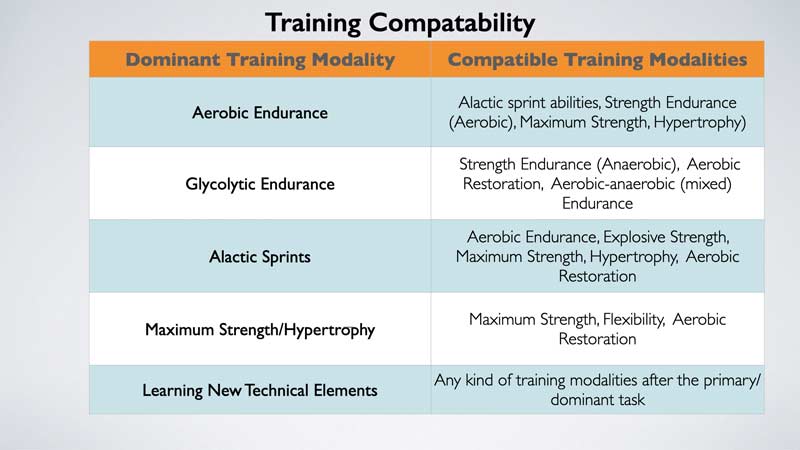
3. Microcycle
A microcycle is a period of four days to two weeks. This is where every detail matters and the structure and order of training have to be dialed in. Organizing the training week in a way that hits the training objective while providing appropriate recovery windows will enable adaptations that increase performance. Cataloging high-intensity training versus low-intensity training gives coaches an easy format to follow, as you wouldn’t want to bury the athletes with multiple high-intensity sessions.
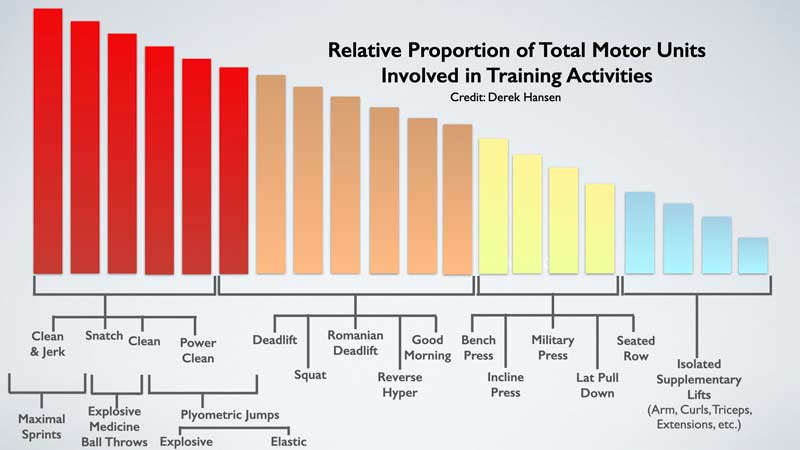
Training in the week should have an undulated loading pattern that consists of wave-like patterns of high- and low-intensity training sessions. Charlie Francis is a major influence on how I program, and he coined the term “high-low programming.” The undulated loading of high-intensity elements in the week safeguards the athletes by providing 48 hours or 72 hours of recovery based on the use of a five-day training split or a four-day training split.
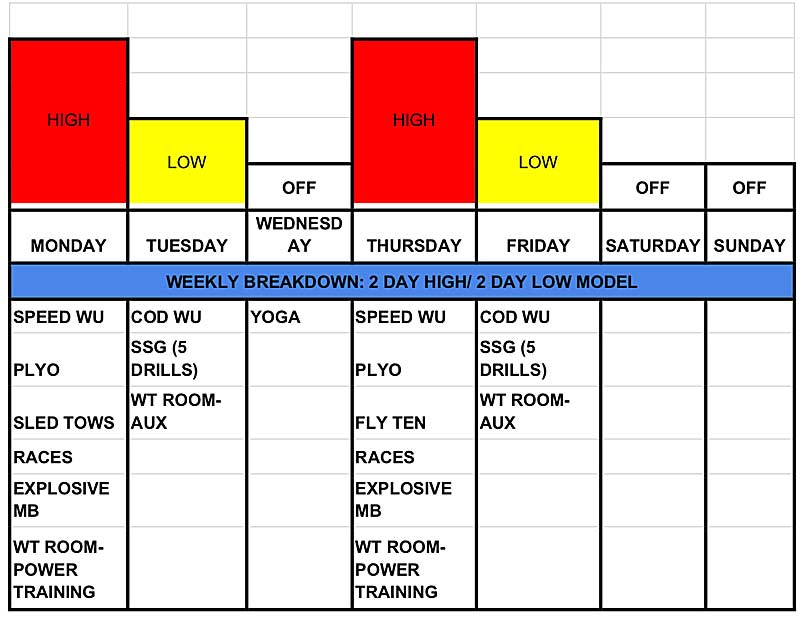
We utilize a four-day split that contains two high-intensity training days. These two high-intensity days are separated by 72 hours; both come off rest days. When integrating small-sided games into the microcycle, coaches have two options:
- Provide extended rest periods, emphasize speed and explosiveness in the SSG, and place them on high-intensity days, replacing a sprint session. Outputs will be higher, and reps will be reduced, but there will be many coaching opportunities in the session. This setup of the microcycle is better in the introduction mesocycle of small-sided games because players can slow down and operate in a fresher state compared to option.
- Example weekly flow:

- Reduce rest periods to game rest periods (25 seconds) and treat the session as a specific conditioning session that falls on one lower-intensity day. The players will get far less coaching and double the number of reps compared to the first option. I like to incorporate these sessions leading into season or spring ball to build specific robustness to gameplay demands. This plan is more demanding on the athlete due to the amount of yardage and mechanical stress from decel and the change of directions involved in the sessions of small-sided games.
- Example weekly flow:

Series Wrap-Up
There may not be a Holy Grail in strength and conditioning, but that doesn’t stop performance coaches from chasing the perfect training program. S&C coaches seek to prepare the athletes for the demands of the game so that they can be robust and resilient and produce performance at higher levels than before.
Small-sided games are the most logical step in preparing athletes for the specific demands of gameplay that general training cannot provide, says CoachJoeyG. Share on XSmall-sided games are the most logical step in preparing athletes for the specific demands of gameplay that general training cannot provide. Although the mythical program that can be deemed the greatest in athletic development doesn’t necessarily exist for everyone’s circumstances, S&C coaches are getting closer to solving their inherent problems in preparing athletes for the demands of the game with the inclusion of small-sided games and collision prep as it pertains to preparing American football players. With this four-part series, I hope that coaches now have the knowledge and instructions to add small-sided games to their training programs.
Since you’re here…
…we have a small favor to ask. More people are reading SimpliFaster than ever, and each week we bring you compelling content from coaches, sport scientists, and physiotherapists who are devoted to building better athletes. Please take a moment to share the articles on social media, engage the authors with questions and comments below, and link to articles when appropriate if you have a blog or participate on forums of related topics. — SF

